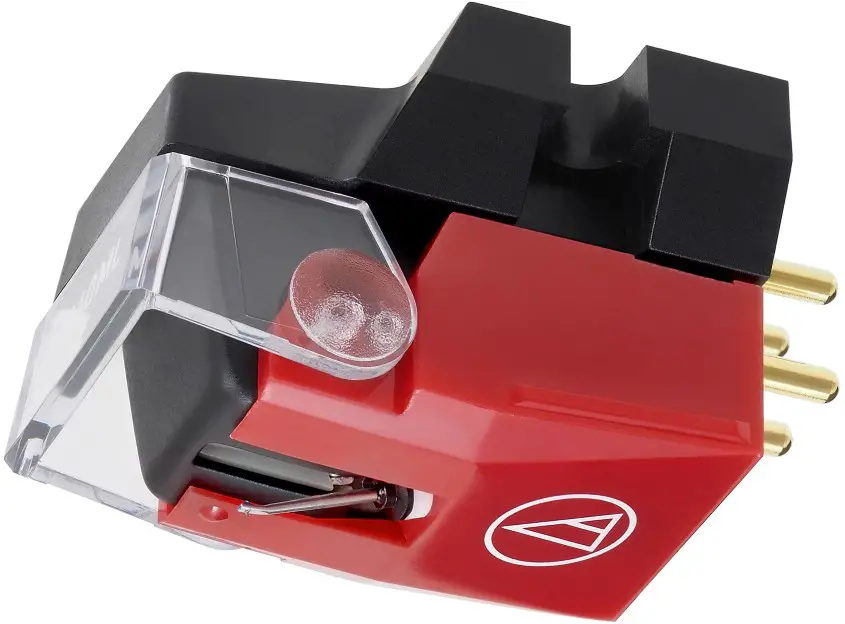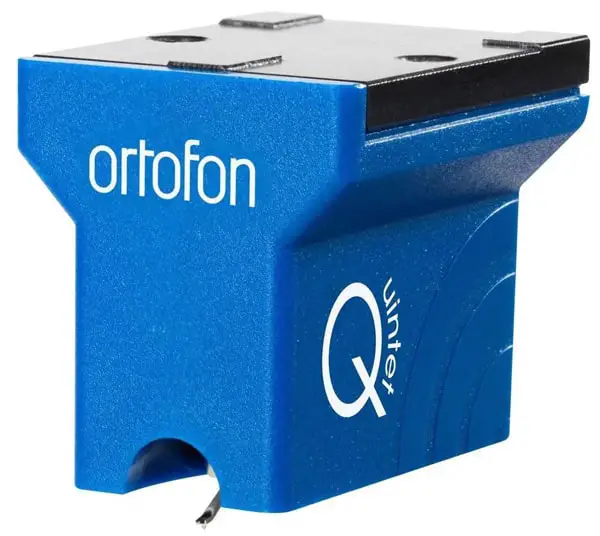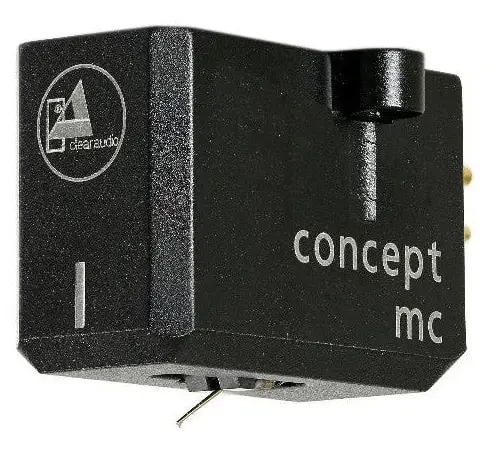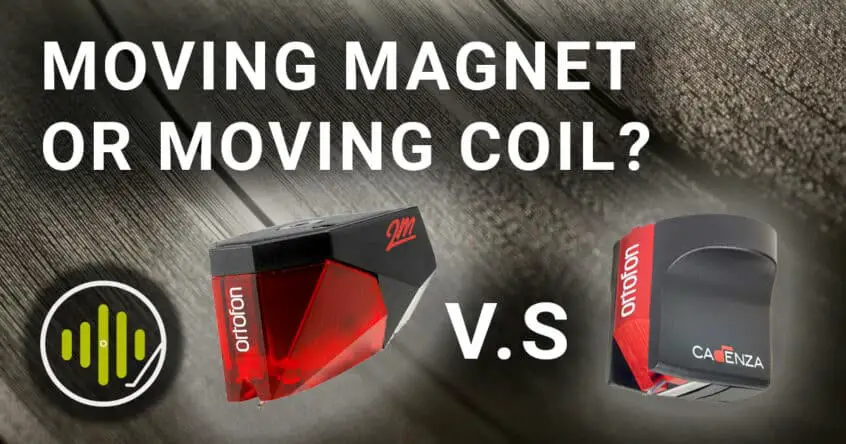When it comes to choosing the right components for your turntable, your phono cartridge is, well, pretty important. After all, this is the device that makes direct contact with your records. In most audio systems, inputs are almost certainly more important than outputs; to put it frankly—shit in, shit out.
There are two main types of phono cartridge available: moving magnet and moving coil. But what are the differences, and which one is right for you? Here’s what you need to know:
Both cartridge types are a transducer, which in simple terms, converts one form of energy to another. In this case, mechanical energy to electrical energy.
The difference lies in how they perform the conversion. Both work by converting the mechanical movement (or vibration) created by the stylus riding in a record groove into an electrical signal. Each design has advantages and disadvantages.
How Does a Moving Magnet Cartridge Work?
A moving magnet (MM) cartridge achieves the energy conversion by connecting the vibrating cantilever to a set of magnets that vibrate in close proximity to a pair of coiled wires. The tiny magnets (positioned between the two coils) vibrate and, in doing so, produce a small electrical current.
Advantages:
A MM design is very robust, produces a moderate to high output level, and has a user-replaceable stylus. They are also typically more compatible with most household stereo equipment, e.g, standard phono inputs.
Disadvantages:
Moving magnet designs are heavier than moving coil setups and also exhibit greater inertia when it comes to reading the subtle changes within the grooves.
This means that MM designs are less competent at tracking very high-frequency content, and therefore some listeners may feel they lack transient detail.
How Does a Moving Coil Cartridge Work?
A moving coil (MC) design works in the opposite way by allowing the cantilever to vibrate coiled wires near fixed magnets. Hence the terms “moving magnetic” and “moving coil”.
The two coils are attached to the cantilever and move within the field of a fixed permanent magnet to form the electrical generator. These coils are much smaller than those used in a moving magnet design.
Advantages:
The mass of the coils is much lower in a MC cartridge compared with MM designs, which in some cases, results in less downward pressure.
Mainly, though, because coils are lighter than magnets, the tracking inertia is much lower, which frees the stylus up and allows for a wider frequency response, improved high-frequency transients, and a more detailed reproduction of the original waveform.
Disadvantages:
Producing such a delicate instrument costs more to manufacture, and also for the end-user to run.
The output signal of an MC design is much lower and will require a phono preamp with an additional gain stage. MC cartridges are also quite delicate compared to MM cartridges and typically do not have a user-replaceable stylus.
Moving Magnet or Moving Coil: Which Cartridge Design is Right for You?
Like all things Hi-Fi related, this question carries a huge amount of subjectivity. The difference between moving magnet and moving coil phono cartridges has a lot in common with the difference between dynamic and condenser microphones.
Microphones are, of course, a type of transducer—just like phono cartridges, and they actually work in a very similar way. Both have advantages and disadvantages and will suit different use cases.
A dynamic microphone is more robust, but typically less detailed, with a narrower frequency response.
A condenser mic is more delicate in design, but has a wider-frequency response and a more competent performance when it comes to very quick, sharp transients. Sound familiar? (Those of you with any sort of studio engineer experience will know this stuff off by heart).
The comparison, though, is a good one. As one type of mic is not better than the other… Just different. There are also no firm rules.
However, dynamic microphones are often more popular in live environments where the mic is subject to more abuse and potential feedback issues. A condenser microphone may be preferable in a more controlled studio environment. You get the idea…
It’s easy to see why decerning audiophiles favour moving coil. If you’re looking for precision and detail, these designs are a clear winner. However, firstly, not everyone has the budget to buy or maintain an MC design, and secondly, not all turntable owners are Hi-Fi audiophiles. An MC design just wouldn’t be up to the performance levels demanded by a turntablist DJ, for example.
Lastly, not everyone has the inclination to run an MC cartridge. The sound quality and performance of a MM cartridge is still exceptionally good—particularly as you climb up in price. And for some, the uplift in sound quality to an MC design simply isn’t significant enough to compromise on conveniences such as user-replaceable styli.
Which Cartridge Should I Buy?
That’s a big question, and a whole other article in its own right. However, the following are some popular (and relatively affordable) choices in both the moving magnet and the moving coil categories.
Moving Magnet

Ortofon 2M Red
Ever popular as both a great starter and upgrade cartridge in the more affordable price bracket, the 2M Red is proof that Hi-Fi quality doesn’t have to break the bank. It has a full, dynamic sound with plenty of mid-range detail, but enough high and low-frequency performance to add “excitement” to the sound. If your budget will stretch to their 2M Blue model, you’ll be truly treated to a cartridge that sounds more “open” and dynamic, with a wider resolution.
The good news is, the 2M Red and 2M Blue styli are interchangeable, so you can always start with a 2M Red and then simply upgrade to the 2M Blue stylus when you’re ready – without having to upgrade the entire cartridge. (Check out our 2M Red and 2M Blue shootout to hear the difference for yourself).
2M Red Price: $99 (All prices at time of writing*).
2M Blue: $239

Ortofon 2M Black
At the top-end of the scale for Ortofon moving magnet cartridges is the 2M Black. This more expensive option features a Shibata stylus, which allows for greater contact with the record grooves and helps to produce a more detailed reproduction. (You can read more about stylus shapes and how they affect record performance, here).
2M Black Price: $995

Audio Technica VM540ML
Other brands do exist, of course. I’ve also had great experience with the Audio Technica cartridges. They also make great affordable ranges equivalent to the Ortofon elliptical stylus designs mentioned, but the model I’m going to highlight is the VM540ML.
The ML features an advanced microline stylus that is said to come very close to the shape of a cutting stylus used to produce original master discs. They are expensive to manufacture, but, when aligned correctly, are capable of outstanding high-frequency performance.
VM540ML Price: $295
Moving Coil

Ortofon Quintet Blue
While it’s well-known that Ortofon manufacture hugely popular MM cartridges, their superb MC designs are lesser known.
For those seeking to venture into the world of moving coil, the Quintet is a great option. It’s easy to fit and has an agile sound when fitting to the right tonearm and paired with a good moving coil phono preamp.
At this price, the Quintet Blue is a competent performer with the What HiFi seal of approval to boot!
Quintet Blue Price: $479

CLEARAUDIO Concept MC
As a popular mid to high-end turntable, the Clearaudio Concept deck is repeatedly held up as the standard by which all other competitors in its price bracket are judged.
The Concept MC cartridge provides an obvious upgrade path from the deck’s more affordable moving magnet baseline. The cartridge is a stunning match with the Concept’s tonearm, delivering moving coil finesse and detail in all its glory.
Concept MC Price: $999




Hello, I’m interested in opinions on the best cartridge for a Sony PS-X555ES turntable with their linear tracking/Biotracer tone arm. It’s vintage 1980’s and was used for years with a Linn Sondek cartridge. I can’t recall for sure 40 yrs later, but I’m pretty sure it’s a MC cartridge, which explains why the signal is so low on my Denon AVR-X6300H receiver. It worked fine on the Dynaco pre-amp, (w/ Sony power amp), I had originally used for it.
It looks like I’d need an added phono-preamp for this receiver since it seems it’s phono input is only viable for an MM cartridge. So the question is, since it looks like I’d need a $400-500+ phono pre-amp for a MC cartridge, is there a MM cartridge that can rival MC performance? Does it help that this is a linear tracking tone arm? Alternately, has anyone used one of the Regas, like the Fono MM MK III, or Cambridge Audio phono-preamps?
Is anyone familiar with the Schiit Magnius preamp. With a name like that, does it have to be good, especially as a MC phono pre-amp?
Geiger S type stylus phono cartridges are very hard to find. Most will cost upwards of $700. The best implementation I’ve found is the high end of the Benz Micro Line and this is an MC above 3K. I would love to see one on a high compliance, low weight 4-7 grams total including mounting screws as these can go up to 70K and the high compliance with sensitive low friction arms such as Technics EPA-100 (You tube shows less than 1mg) with ruby bearings allowed the high end of the Technics line to reach almost 100Khz. The distortion levels are almost nothing with the high compliance and the arm resonance of these cartridges was the ideal between 9 and 12hz. The question of MM or MC was over with in the 1990s with the lowest weight of cantilever system of the Shure V-15 type V xMR being .24 mg, by far the lowest ever and also the best tracking cartridge of all time at any frequency and to our benefit, a new manufacturer is making styli for these that are actually better from Japan. Absolute Sound has it as their reference in their Feb issue of 2023.
The greatest cartridges made were capable of reaching 70Khz for quadraphonic era and those happened to be mostly moving magnet and their cantilever weight was much LESS than moving coils today. Stanton’s 881 was capable of reaching 50Khz flat +/-2, 35db separation, the 981HZS:
981LZS:
Type: Moving magnet, low impedance.
Stylus Type: Nude stereohedron.
Tip Dimensions: 8 x 71 microns.
Tracking Force: 1 gram ±0.5.
Setting with Brush: 2 grams ±0.5.
Resulting Tracking Force: 1 gram ± 0.5.
Frequency Response: 10 Hz to 50 kHz.
Output: 0.06 mV/cm/S.
Channel Balance: Within 1 dB at 1 kHz.
Channel Separation: 35 dB at 1 kHz.
D.C. Resistance: 3 ohms.
Inductance: 1 mH. Weight: 5.5 grams.
Load Resistance: 100 ohms or more.
Load Capacitance: 1000 pF or less.
Replacement Stylus: D98S.
This was Doug Sax’s reference along with the SP-10Mk II and III and EPA-100 which is the greatest tone arm ever made with the lowest friction by at 1mg, other technics arms are 4-5 and what is considered great yesteryear and today is 20mg. It’s resonance is essentially perfect for both this arm and the SME III 9-12, with the EPA-100 using ruby bearings inside of the system as well it works as equal to the finest micrometer and precision instruments and documented to where there is no question that can argue unless you can’t understand what you are reading (like the idiot cogging when the idiot takes off the reason for the flywheel effect which few understand today as the weight is to be on the outside and absolutely balanced while the platter is stiff, weight just adds to the grind and belt drives are 1 step up from rim drives with cockeyed alignment, low power cogging motors as well and cannot keep decent speed as W&F is many times more that the good and best direct drives of the mid 1970s (your vinyl was created on an SP-02 with neuman cutter with ortofon replicant with control by Digital Equipment PDP-11 or Vax 11-7xx and these had microscopes to verify the cutting quality of the master, and SME arm for playback (yes those stupid light head shells WORKED. The S/N (and all of these measurements were made on the best of Brüel & Kjær’s tape read out and now available for download to computer with the numbers and the fact was that the good PLL Direct Drives are superior technology with only one point of pressure and the weight of the good platters are not ultra heavy because in the flywheel effect, and look at the new SP-10 of Technics, all the heavy tungsten weights are on the outside of the platter, while the friction of the sleeve is machined vastly better than the wobbly belt drives with just as strong of a bottom bearing.
Koetsu cartridges are a rock and can’t track unless grinding a new groove at 2+ grams and with little better than the best higher compliant low weight cartridges of the past and those old cartridges are going for several times the amount than new and in tonearms as well while some tables of Direct Drive are considered unobtainium (can’t buy at any price). Like Nelson Pass said making his own reference amps for life from the Yamaha design of the VFET, there is nothing that comes close.
The Fritz Geiger S stylus is used in many of the very very best sounding cartridges as well and has been around for 50 years and a Super OM40 without the S which is in the highest of the Benz Micro cartridges, will dust 90% of the MC out there. All measurements, and I was there to watch many times for turntable tests and clinic as at 65 I’ve seen a few magic words in a piece of garbage that didn’t measure up regardless of how to put up an argument that was from 5 year old minds of adults that couldn’t handle the fact that they had been taken to the cleaners.
I do like SOTA and their vacuum players but they have gone to heavy and their platter doesn’t absorb/disappate vibration while other platter mats are a far cry from the Canada Music Mat and now the turntable mats are garbage with no technology but wild ideas from a mind that can’t comprehend what they are really doing (Glass, Metal, Acrylic, holes in hex of metal?) and can’t get any worse. Canada Music Mat could be measured in effectiveness, did not hold static, stayed clean easily and did not wear out and good luck getting one today.
WTF are you babbling about?
I have been using a MC for many years and it is tracking at 1.3 grams. When I made the move from MM to MC I was instantly amazed by the difference. A veil had been lifted and I will never go back.
That’s amazing Mike. Great to hear. I’d love to make the jump one day
I have a audio technica LP120 which I upgraded to a ortofon red 2m . I am hearing a lot of noise coming from the needle it’s a scraping noise. Anyone else having this problem?
Very difficult to diagnose without hearing the problem directly. The LP120 should handle the 2M Red with no issue, though. What stylus did you have originally?
In the future include the moving iron carts from soundsmith and grado
Thanks. Not as familiar with those, but will take a look.
The first cartridge I ever had was an Ortofon MC cartridge and then I upgraded to a Shure Mark I5 and I found the sound on the Shure better. I now use a MoFi MM and I am very happy with sound. I’m not sure at my age my hearing is good enough to tell the difference now.
To this day I think it’s sad that Shure stopped producing cartridges. I worked for the company for the best part of 9 years and have a real love for the Shure stuff. I’ve got about three of the m97xe’s in my draw, one of which I purchased an after-market stylus for…
Never had the please of hearing the v15 though
Marc, I have a Shure V15xMR with the original MR stylus, case, and box that I am thinking about selling as I want to upgrade to an AT33EV MC cartridge. I love this cartridge and I have upgraded the stylus to an aftermarket Shibata stylus.
If you are interested in buying the V15xMR from me, shoot me an email at [email protected]!
Keaton
The concept of moving coil being of lower mass is true for the most part but is NOT true overall. The very lightest design of the stylus, cantilever system is the Shure V15 type MR and by a large margin. It had a tube boron cantilever, very strong magnets and the overall moving mass. In fact it’s stiffness-to-mass ratio of any cantilever ever made, and results in outstanding high-frequency tracking. The low-mass Micro-Ridge stylus shape features a very small tracing radius, which reduces distortion; and the MASAR polishing of the contact area results in an ultrasmooth contact surface.
The ability to create a cartridge today would put most makers putting a price tag well over 8-9K. This is the same situation as the VFET which is by far the most superior transistor ever made that all the advantages of tube are available in a much faster transistor that has no deviance allowed in the BIAS but it is very expensive to make. This is why Nelson Pass bought the last of them and as far as price, it will always be his reference for the rest of his life.
[…] Moving Magnet Vs Moving Coil Phono Cartridges – What’s The Difference? – Sound Mat… […]
Just wondering, I currently am using an Ortofon blue cartridge and am wondering if I can just change the styli to an Ortofon bronze or black without having to purchase the entire cartridge?
Yes you can, but the engine is different. Red and Blue have copper coils, The Bronze and Black engine has silver plated copper coils.
Ortofon advises to buy the Bronze/Black cartridge, but technically you can put a Bronze stylus (nude fine line stylus) on a Red/Blue engine. Tracking is 1.5g instead of 1.8g for the Blue (nude elliptical stylus).
At the beginning of this article you invited your readers to say what cartridge they are using. I assume this is the place to do it. I still run my vintage Shure V-15 Type II. I have been using it since they were first introduced in the 1970’s.
It has a wonderful open and airy sound quality that mates up with my Dynaco tube amp and preamp and my Altec/Lansing A7 Voice of the Theater speaker systems beautifully. The only problem these days is finding a suitable replacement stylus for it. OEM styli often show up on eBay but they are priced in the stratosphere and the suspension rubber is often dried up rendering the stylus useless. A couple of years ago I purchased the then top of the line Shure audiophile cartridge. It sounded perfectly horrible, tight and restricted. I shortly removed it and discarded it and went back to my trusty ol’ V-15 II. I finally found a guy that custom builds N-15 styli that meet or exceed Shure’s original specs.
Hey Terry, that’s great. The V-15 is a classic. Sadly, Shure discontinued their phono line earlier this year. The V-15 remains a popular vintage classic, as you suggest. I’m glad to hear you can still get a good stylus for those!
I have found all of this very informative. I am looking for a replacement styli for my sure 15 type 2 Currently I have put in an M44 styli … not a perfect fit but it works.
Terry, I would be grateful if you could provide the contact information for the person who is building these stili . And would you happen to know the cost?
Thanks
Joe
Terry, try with the stylus of JICO, I use them in my Shure V15Type III Ans is really fantatstic. https://www.jico-stylus.com/
[…] https://www.yoursoundmatters.com/moving-magnetic-vs-moving-coil-phono-cartridges-whats-the-differenc… […]
I’m still using my Audio-Technica AT440MLa that still plays beautifully. There’s a b version and now the VM540ML, which are IMHO essentially the same cartridge. For their price these cartridges are unbelievably awesome. The sound these things can extract is crisp and detailed as even cartridges above USD 1,000 would not be able pull. Mind you these guys are not exactly forgiven with worn out vinyl so better keep a good-old faithfull conical cartridge like the AT95E for those records that have seen one too many turns. My two cents…
In addition to moving coil and moving magnet there exist strain gauge and ds audio optical carts which readers need to be exposed to
Thanks John. Yes, a feature on some of the alternative cartridges would be good. Those ds optical carts are pretty pricy! But worth highlighting to readers as you say.
MM carts generally track better, please email me for more info, I have 40 years in the hifi business
Hi Chris..looking to upgrade my Otofon 2m blue cartridge to the 2M orange or black..I want to maximize the sound quality through my system. Thanks
Funny you should reference the Audio Technica VM540ML. That is what I’m currently using. It has a great sound and can track just about anything with a full low end, not-too-harsh highs, and virtually no inner groove distortion. The word “smooth” comes to mind, and with all types of music. One caveat with this particular cart is that a replacement stylus costs almost as much as what I paid for the entire cartridge! I’ve never really been enticed enough to try a moving coil cartridge, to be honest. I’ve been a MM guy since my earliest vinyl days and have owned various models from Stanton, Shure, Pickering and ADS. I do recommend a dedicated mono cart for older mono vinyl. To that end, I use another Audio Technica cart, their VM610. Cheers everyone.
Cheers Paul. Yes, the VM540ML is great, but it’s always frustrating when the replacement stylus costs as much as a full cart replacement. A microline stylus comes a somewhat of a premium. Thanks for taking part and happy listening.
The assumption conveyed here is that MM vs MC cartridges present the only choice for the hi-fi enthusiast. For many, if not most, this simple choice provides a very wide array of cartridges to suit any budget and great sound reproduction. But they are not the only two types available. For over 40 years I have been using moving iron cartridges – specifically those originally developed by Decca Special Products. These cartridges do not feature a stylus mounted on a long cantilever which is, arguably, a design weakness shared by both MM and MC cartridges. Consequently, the stylus has much improved tracking and provides a more musical output. Perhaps Sound Matters may wish to feature these designs in a future discussion?
Hey Derek. I should’ve perhaps made that clearer “There are two main types of phono cartridge available:” was supposed to imply that there are other designs. A feature on alternatives would be good, including the DS Audio Optical and strain gauge types mentioned by John in this thread. Thanks for sharing your experience with moving iron – admittedly not a type I have direct experience with.